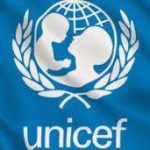
By Funmilayo Adeyemi/ Folashade Akpan
Port Harcourt, Aug. 30, 2022 (NAN) Imo and Ekiti rank the lowest in the number of out-of-school children in the country with one per cent and two per cent respectively, according to United Nations International Childrens Emergency Fund (UNICEF).
The Chief of Measurement for Results (M4R) UNICEF, Mr Claes Johanson, gave the figures on Tuesday at a two-day Media Dialogue on the Multiple Indicators Cluster Survey 6 (MIC6) Results in Port Harcourt.
Also, the 2018 statistics indicated that Abia, Kwara, Enugu, Bayelsa, FCT and Ekiti were topping other states with the lowest number out-of-school children.
He said that 27 per cent of children aged seven to 14 years have foundational reading skills while only 25 per cent are with foundational numeracy skills.
Johanson, however, stated that the MIC6 had helped in fishing out data in every sector that would help in analysing how things were working and why they were not working.
He said, The lowest out-of-school rates are found in Ekiti (two per cent), and Imo (one per cent). The highest rates are in Kebbi (65 per cent), Zamfara (61 per cent) and Bauchi (61 per cent).
Johanson said that the MIC6 results showed that Kebbi, Zamfara and Bauchi States have the highest number of out-of-school with 65, per cent, 61 per cent and 61 per cent respectively.
According to him, the figures indicate that Nigeria has not seen improvement in the number of out-of-school in the past five years and should begin to improve on this area.
It would be recalled that the data on the 2018 Digest of Basic Education Statistics by the Universal Basic Education Commission (UBEC) showed that Kano, Akwa Ibom, Katsina, Kaduna, Taraba, Sokoto, Yobe, Zamfara and Bauchi were having the highest figures.
The MIC6 cleared many things. In education and health, weve seen some of the most important findings. There is a good news, weve seen that fewer children under five were dying.
A large percentage of this is driven by increase in immunisation.
So, we had only 34 per cent children immunised five years ago. But now, we have 57 per cent, which really calls for celebration.
It is something we should really be happy about.
We also see that there is room for improvement everywhere particularly in education.
For the first time, we are looking at children that are actually learning, and we see that only 25 per cent have foundational numeracy.
One out of four children does not even go to school, so, the number of out-of-school children is still one in four and thats the same as five years ago.
So, continuing education is the most important thing, he said.
Johanson stated that the girl-child education plays a huge impact on every sector from health to the education of the child.
Hence, there is the need for policy makers to step in, to address problems that may emanate from inadequate focus on education, he said.
According to him, Sokoto has improved in the area of child marriage as a result of the level of education, urging journalists to report on the MIC6 results.
He stated that such reports would make other states with high out-of-school figures learn from the activities of states improving in this regard.
Overall, we see that the child marriage dropped a lot in Sokoto State. It used to be one in four, but now, it shows that one in three girls can marry before the age of 18.
Sokoto has improved on that more than the other states. As such, we are here with the media to look at the why this has happened, he said.
According to Johanson, UNICEF is working with the government to use the MIC6 to inform programmes and learn about what the country can do differently.
Similarly, the UNICEF Communication Specialist, Geoffrey Njoku, said that MICS 6 was an improvement on previous five years, which had presented indices on poor performance on health, education and other areas of SDGs in the 36 states and the Federal Capital Territory (FCT).
Njoku stated that the media dialogue was organised to look into factors responsible for the poor indices specifically and why some lingering challenges still remained in some parts of the country.
We have some good figures and we also have some that are not so good, so, we want to know why some of these indices are not very good.
We have to look at it from: could it be as a result of wrong identification of application of funds or non-application and wrong identification of where to apply the funds, he said.
Njoku described political will as essential with marked resources to intervene with positive impact that would yield better results on the SDGs.
He, therefore, called for more actions and better interventions to make significant difference in reducing the number of out-of-school children in states with prevalence.
Good, we say that out-of-school is decreasing, but in absolute numbers we have a population growth that swallows up and minimises the results, he said.
Njoku said the dialogue was held to get good and better results five years from now on health, education and SDGs through reports in various media platforms.
The News Agency of Nigeria (NAN) reports that the dialogue brought together over 40 journalists covering the education and health beats from different media organisations across the country. (NAN)(www.nannews.ng)
Edited by Folorunso Poroye/Julius Toba-Jegede
Source: NAN News